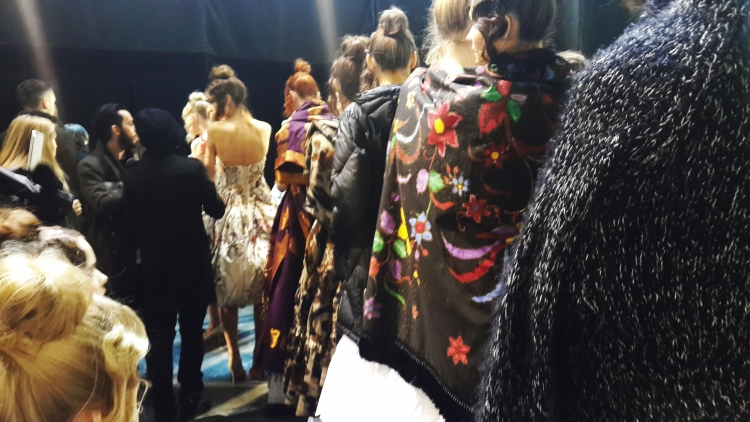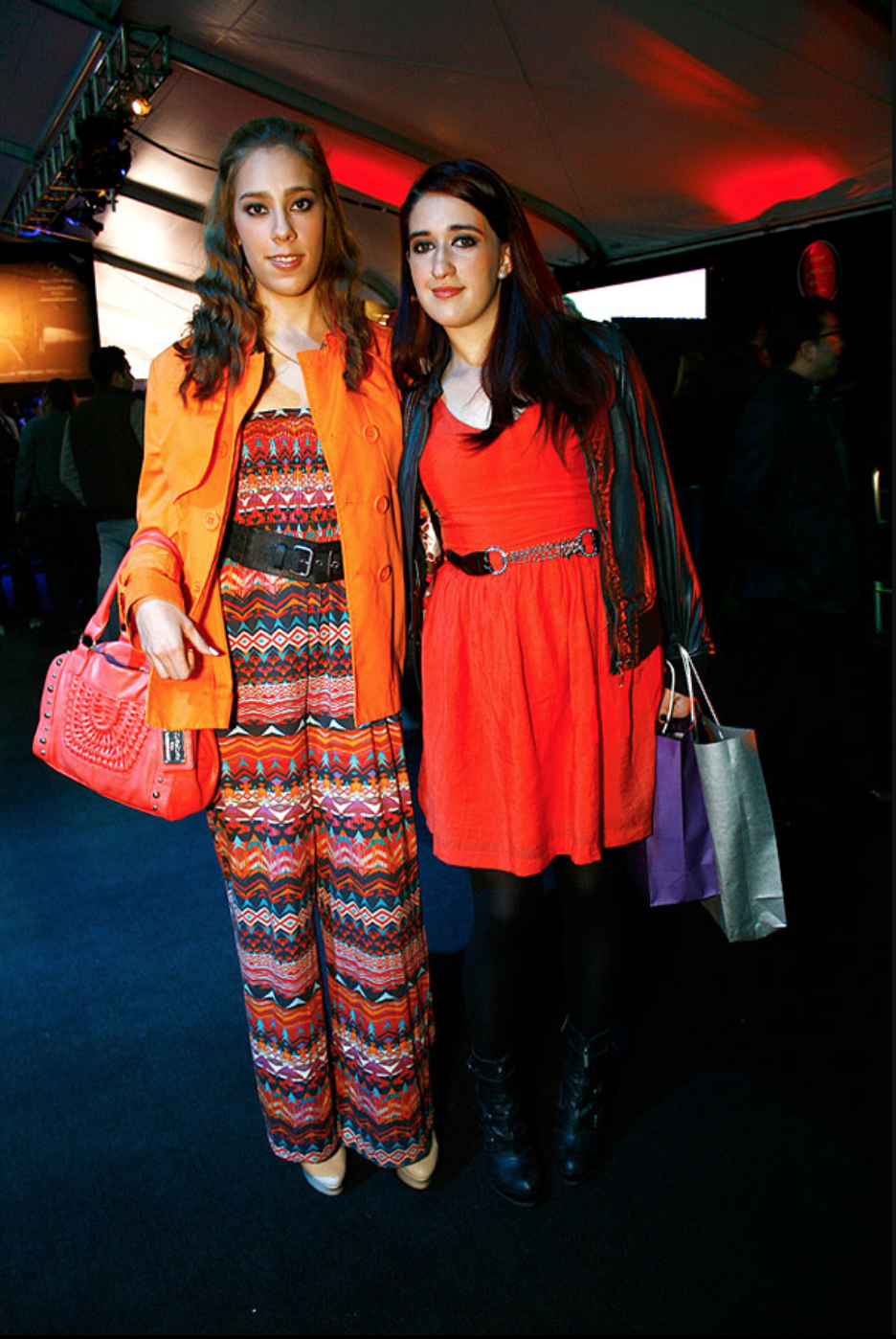Sew Into Fashion: The Introduction

So you’re sitting on your bed, probably still wearing your pajamas at one in the afternoon on a Sunday; maybe watching The Bold Type or The Devil Wears Prada, wishing you had Blair Waldorf’s wardrobe (maybe Serena’s?) or watching Sex and the City reruns, wondering how Carrie Bradshaw had such an inside in the fashion world. What would it be like to be in their shoes? Doesn't it seem unattainable? Maybe I'm wrong.
You may be thinking how superficial and impossibly inaccurate it all seems from where you’re at...but guess what? I’m here to tell you, it’s not as impossible as it might seem. I’d like to shine a bit of light on those misguided ideas surrounding fashion. Beyond parties and shows, it's a lot of hard work and planning: it is a billion-dollar global industry after all.
That’s why for this series, I’m going to be taking you into different perspectives, exploring career routes, and talking to insiders in order to open up a window into what fashion is really like, all from people who have experienced it firsthand. Sew into Fashion will be a series of interviews with fashion gurus, their stories, how they got into the industry – mostly a beginner’s guide to breaking into the intricate world of fashion.
Why am I writing this, and who am I to talk to you about fashion?
It all started in 1994… no, we’re not going that far back, don’t worry! It all began when I had to present my future occupation to my 3rd-grade class. I was tall, cute and slender, so I figured I could be a model, why not, right? (what a conceited little 9-year-old). I thought my fate was sealed, that I would eventually begin my career as a famous supermodel like Gisele Bündchen…but as it usually happens, we grow up and realize some dreams aren’t meant to be. My enthusiasm towards fashion, however, only grew stronger as the years went by; I eventually settled to study image consulting during college in Mexico City. It may sound like a foreign concept, but it’s basically the study of how color theory, personality traits, clothing, posture, and graphic design among other details influence the perception of people about a brand (i.e someone specific, yourself, or a corporate identity even). It also explores the correlation between image and its commandment of power. It wasn't specifically fashion related, but it was a legitimate career choice, so I thought it could be a great starting point, and boy was right!
Mexico City is home to one of multiple Mercedes Benz Fashion Weeks around the world, and the fashion scene there is growing constantly, which means that simply being in the city brought me one step closer to being in fashion. I had always dreamed of seeing a runway in real life, but I used to think it was an impossible feat to accomplish if you weren’t famous, aristocratic, or wealthy. I tried my luck one day by reaching out to a brand that was showcasing at the MBFW in Mexico. I contacted them through Facebook, and got the tickets! I attended my first Fashion Week and I was ecstatic, I just could not believe my luck. Little did I know, it would be the beginning of the rest of my life, and I had learnt the number one trick of the trade.
/Image Credit: Glamour.com Photographed by Adrian Garcia
Here’s the secret: people will usually try to help you if you’re interested, nice, and if you just ask them. It really is an underestimated, mind-boggling concept. This experience only served to remind me that my goal was to be in fashion, so I tried again a while after, this time with a bigger goal in mind: not only get accepted into one of the most famous fashion schools in the world, but also move across the globe for it. After applying, I got accepted with a scholarship to study fashion styling at Istituto Marangoni in Paris. It’s crazy how much perspective, culture and your surroundings influence you. To paint a better picture of what I’m trying to convey, imagine a bright blue surgeonfish (better known as Dory from Finding Nemo) in a sea of black… well that was me, and even now, as much as I love black and it’s slimming qualities, I can’t quite wrap my head around the idea of wearing all black a la Parisian style all the time.
The lessons I ultimately learned from my 2-year experience there, both studying and interning in fashion shows and showrooms are priceless: fashion is a very informal and casual environment, business language and normal email etiquette are irrelevant when communicating among your new fashion buddies, and everybody knows everybody, so beware for both the good and the bad from that! The first email I ever wrote applying for a job was a disaster, I followed every rule: I was cordial, very professional, I even called the person by their last name… and now I understand the reason I never even got a reply, and why the person on the receiving end might have had quite a laugh while reading my email. I was clearly not fit for that fashionable job with my formalities! People in fashion don’t like the use of stuffy last name formalities – as a rule of thumb, stick to the person’s first name. Speak to them not as a friend, but not as if you were speaking to your high school principal either, somewhere between “what’s up” and “how do you do” usually does the trick.
Going out partying, dining, or drinking at the posh and trendy places in Paris during Fashion Week can lead to anything: celebrity sightseeing, new friends in high places, and job offers over drinks. Socializing is part of the job description.
It is much easier to get into a runway show that it’s thought to be – it only involves hours of waiting and standing in the cold, rain or sunshine, and a creative outfit, not necessarily head-to-toe Chanel, but something that stands out usually helps. If not, well hello PFW blog post on street-style! There’s an insane amount of preparation, manpower, and logistics behind the show itself. Speaking different languages will get you places, even if you are Mr. or Ms. Nobody and have no connections, speaking English well (or any other second/third language for that matter) is an uncommon thing.
The most important lesson is: learn the names and faces of important people, designers, and models, you never know who you will run into while arranging clothes, walking down the street or working behind the scenes. It will save you many embarrassing moments. I interned at the Azzedine Alaïa Showroom and met Mr. Alaïa himself (who recently passed away at the age of 77) on my first day. I failed to acknowledge who he was (but fear not, I got instantly and dismissively stared at by a handful of models, dressers, and workers for this). So please – avoid yourself the trouble of committing temporary fashion suicide and if all else fails, just ask beforehand.
Yes, the fashion industry can be a little The Devil Wears Prada-y in more senses than one, but for every Miranda Priestly out there, there are a handful of kind (yet demanding) people willing to help you succeed. Take my word, or don’t: after all, I am but a fashion graduate with big dreams and a foot in the door, hoping I can eventually have a seat at the champagne drinking, Prada-wearing cool people table.
Stick around to learn more about the intricate world of fashion in weeks to come, where I will be interviewing a model, senior showroom consultants and directors, a CEO, and a designer to see if the industry truly lives up to the je ne sais quoi that keeps us coming back for more.








